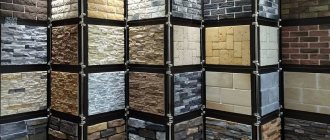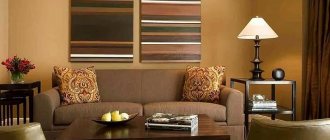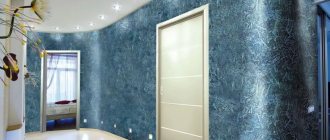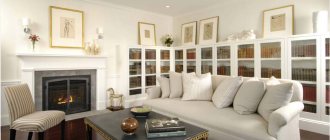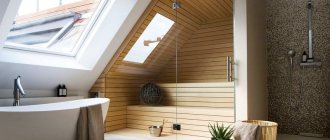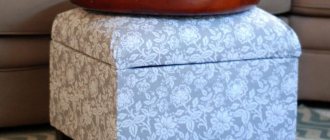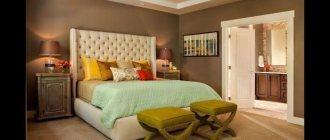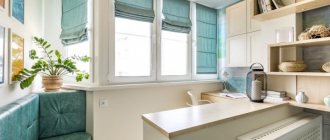Today's market is able to satisfy buyers with any stylistic and financial preferences in choosing a carpet
Once upon a time, our ancestors lined caves with animal skins. With the advent of weaving, floors were decorated with carpets and homespun floorboards. In modern interiors, you can increasingly find carpet, a practical and stylish covering that brings warmth and comfort to your home. What do manufacturers offer us and how do we make a choice?
Neutral flooring shades help highlight other decorative elements
Effective combination of contrasting colors
Transform your interior with your chosen floor covering
Advantages of using carpet
A rug can transform a room.
Pleasant tactile sensations when walking on the carpet give comfort and coziness. For this reason, it is used in the design of bedrooms, children's rooms, living rooms and other rooms of the house. There are several reasons why people choose carpet for their home:
- It has good heat and sound insulation properties. Helps create a comfortable microclimate and cozy atmosphere in the room, muffle extraneous sounds and keep warm or cool depending on the time of year. This is especially true for long-haired coats.
- It is easy to install and even an inexperienced person can handle this process. It can be cut into pieces of any size. If you have a photo, there are no difficulties in selecting it.
- It traps dust and prevents it from rising from the floor. To make mats, natural or synthetic materials can be used, which are absolutely safe for the body.
- A carpet can last up to 10 years, depending on the type and location of use. It wears out faster in the hallway than in the bedroom.
The advantages of the carpet that contribute to its popularity include the variety of colors. It is not difficult to choose carpet for any interior design. It can be simple, with an ornament or pattern, so it can easily fit into a classic or modern style, hi-tech or country style.
Features of selecting carpet for the interior
To create an attractive and cozy interior, when choosing a carpet you need to take into account some nuances:
- For a comfortable interior, choose coatings in pastel and warm shades. A beige carpet would be an ideal option.
- For an energizing design, use brightly colored carpeting: red, green, orange, but keep the walls and details in soothing shades.
- Burgundy color is good for the kitchen. It is advisable to combine it with other details, but not with curtains, as the interior will be too heavy.
- A blue carpet would be an excellent solution for a living or dining room. Pairs well with gray, white and other colors.
- Pink carpet can be used for a girl's bedroom or children's room.
- If you use yellow or orange carpet, it should be complemented by textiles or other interior details of the same color.
- Black carpet is not suitable for home use, as it gives the room an office-like austerity.
Gray carpet is considered a universal material, but it must be used correctly in the interior, complementing it with bright walls or details. When creating a design, it is important to adhere to the basic rule: bright walls and a calm floor and vice versa. Color contrast is the best solution.
Light carpet in the interior
Carpet with embossing
Carpet in the interior can give special comfort and coziness. The right color, pattern and type of material will allow you to create a unique and practical design.
Patterned carpet
Types and characteristics
Based on the manufacturing method, carpets are divided into:
- Quilted. It is made by piercing the base with wool-filled needles and forming loops from them. This technology makes the carpet stable, but allows you to create multi-layered patterns and achieve different effects by varying the depth of the fleece, cutting it or leaving it untouched.
- Intertwined. The warp and weft threads are intertwined to form a durable and wear-resistant material.
- Broken needle. The process is reminiscent of felting: hooked needles pull the wool back and forth to form a dense surface. It is inferior in beauty to the first two types, but is distinguished by increased wear resistance and soundproofing characteristics.
There are a lot of things:
- Natural. Wool, cotton, linen, sisal. Almost no chemicals are used in production, so the cost is higher than synthetics. The solution is suitable for living rooms not only for its environmental friendliness, but also for its ability to maintain a microclimate: the fibers absorb excess moisture, and when the air becomes dry, they begin to release it.
- Synthetic. The floor covering is made of polyacrylic, polyamide and polyester threads. Their price is rightfully lower, but their resistance to stains is better - the surface can be washed, and most stains can be easily removed from it.
If you look closely at the carpet, you can see that it consists of several layers: the top one is the pile itself, then the main coating with glue and a base made of different materials. The pile material can be synthetic or natural.
Based on the base material there are:
- Heard. Does not rot, suitable for wet cleaning.
- Textile. Only resists dry cleaning.
- Eraser. Not afraid of water, but takes a long time to dry.
- Latex. It takes as long to dry as rubber. After 5-7 years of use, it may begin to crumble.
The last difference between carpets is the scope of application:
- Domesticated. Soft wool simultaneously allows you to walk in socks or barefoot and complicates the grooming process.
- Commercial. Thicker hair (designed for walking in shoes), limited choice of shades. Easier to care for. The cost is higher than domestic.
Artificial materials: acrylic, polyamide, propylene and other fibers are more durable than natural ones. They do not change color for a long time, the pile of such a carpet does not wrinkle under the weight of furniture, and is resistant to being picked out. One of the main advantages is low cost.
A natural rug is made from wool, sisal, cotton, jute and even silk. But please note that 100% natural material is practically nowhere to be found. The higher the percentage, the higher the cost. Wool on the floor retains heat very well, has good sound insulation, but requires more careful attention to itself; you will have to buy only those detergents that are intended for natural materials.
The pile itself may differ in the way it is weaved:
- Loop: involves attaching a fiber loop to the base; this pile has a stiffer surface and is highly resistant to fraying. It can be multi-level to make the drawing look three-dimensional.
- Fleece: To create a loop, the fibers are cut and woven into the backing. The coverage varies according to hair length: short, long and medium hair. Combined species may occur.
The base for carpet is very diverse - it can be made of natural jute, as well as artificial rubber, latex and felt. All materials have their pros and cons: natural materials are afraid of water and moisture, mold easily appears on them, but they do not have a chemical smell like a synthetic base.
Methods of making carpets:
- woven, the most expensive, when strands of hair are intertwined with the base;
- quilting - fiber bundles are glued to the base, the most common method;
- needle-shaped - fibers are directed by needles, entangling them, such products have a low cost;
- flocking is the fixation of fibers about 3 mm long on a polyvinyl chloride base, this carpet is completely artificial, suitable for bathrooms and kitchens.
Needle-punched carpet
A fairly simple floor covering, its qualities reminiscent of felt. Its name suggests that the manufacturing process involves a large number of needles, pulling the threads and weaving them together. On the reverse side of the product there is a dense and flexible rubber base. The cover is easy to install and looks smooth.
Rugs of this type are chosen by those who love a smooth, lint-free surface. Its advantages include high wear resistance and low cost.
Tufted carpet
The technology for making this material is similar to the sewing process, in which needles make loops, but do not pull them out. The surface of the material is covered with low and clean silky pile, the lower base is latex. This type of coating is not afraid of moisture.
Flocked carpet
The basis of the material is PVC, on which the wires are fixed with latex, and their direction is regulated by an electrostatic field. The coating is very plastic, resistant to damage and deformation, and is not afraid of moisture.
Woven carpet
The fabric production technology is reminiscent of the production of oriental carpets: a pile is formed using a knotted method on the basis of a jute rug. The cut strands lie flat, forming a smooth surface. Some manufacturing stages are performed manually.
The material is incredibly strong and durable. It does not fade and can be simple or unusual.
Types of coating
Carpet is divided into several types, which depend on the material used and the production technology itself.
Most often, polyamide, wool and polypropylene materials are used in the production of carpeting.
Wool products are natural and expensive. They are environmentally friendly and fire-resistant, but their disadvantages include fairly rapid wear.
Polyamide is classified as synthetic. Their significant advantages include: elasticity, wear resistance, fire resistance. But they can cause allergic reactions during use, since they are produced by chemical synthesis.
Polypropylene is the cheapest and most commonly used in the production of floor carpet spinning materials.
In addition, carpet floor designs are often used, using various combinations that combine the above-mentioned materials in different parts.
How it looks in the interior
Designers and homeowners do not yet have a common opinion about carpet: some consider it outdated and impractical, others consider it stylish and comfortable. But the fact remains: the scope of application of rolled mats is wide and durability depends more on the quality of the surface itself than on its care.
The photo shows a high-pile carpet
If you look at photographs of foreign interiors, you will notice that most rooms have only carpet.
The photo shows a variant of a neutral pattern for the bedroom
In Russia it is used less often, but if you have helpers in the house (for example, a robot vacuum cleaner), you definitely shouldn’t be afraid: with proper care, it will retain its original appearance for many years.
Before purchasing, weigh all the pros and cons of the carpet, carefully study the composition - only then make a decision about payment.
Gray carpet in the bedroom interior
A huge selection of colors, patterns, styles will allow you to choose a carpet for any room and setting. Although, of course, there is a certain problem with this: choosing the right rug for you.
There are some simple tips. To create a light atmosphere in the room, you should choose carpeting in a light and light shade. If we are talking about a room that people often go to, for example, in the living room or hallway, then it makes sense to choose a dense, wear-resistant coating.
Are you looking for a rug for several rooms at the same time? Here you will find the inspiration and interesting ideas you need. We have collected rugs of completely different styles for you. You'll see that a floor rug can be anything but boring!
For kitchen
When choosing a kitchen rug, pay attention to its durability and water-repellent properties. Opt for low-fiber or lint-free synthetic fiber flooring.
A multi-colored rug with a small pattern is suitable for the kitchen. Dirt on it is not so noticeable.
For bedroom and living room
A long-pile carpet made from natural fibers is suitable for these areas. It is pleasant to walk on such a surface barefoot. The design can be matched to the style and color scheme of the room.
For office
The main requirements for office carpet are durability and resistance to stains. For office spaces, rugs with a rubber base and short pile are suitable.
For rooms with high traffic (halls, corridors, employee offices), choose carpet with a pile from 3 to 15 mm and a wear resistance class of 31-33. The coating must be a single tone, unmarked color. The director's office or conference room can be lined with piles up to 8-11 mm. In this case, you also cannot consider options with a lower wear resistance class, for example, 21 - 23, since the lining will be used in the shoes; it is better to take a class 31 - 33.
For children's
The carpet in a child's room should be safe and easy to clean. It is better to choose carpet with synthetic pile. Unlike natural ones, it does not cause allergies. Medium-length pile is suitable for a child's room - it is pleasant to the child and does not require frequent cleaning.
The carpet for a child's room should be bright in color. For the little ones, you can choose rugs with cartoon characters, such as Cars for boys and Disney Princesses for girls.
In the hallway and corridor
These are the areas with the most traffic in the apartment, so the carpet must be durable. Also noteworthy is the ease of cleaning and moisture-repellent ability.
For a hallway, a synthetic carpet with short pile and a simple design is more suitable.
Cozy home theater interior
Carpet in the dining room
Carpet for living room
When choosing carpet as a floor covering for the living room, you should give preference to a dense fabric with short or medium pile. You need to select the material not only by appearance, but also by practicality, so that the product does not cause difficulties during cleaning.
To buy the most suitable flooring for your living room, you need to think about the overall color scheme of the room. A carpet in light or pastel colors is perfect for dimly lit rooms; it will look appropriate in the following interior styles: Empire, Art Deco, Baroque, vintage, grunge or constructivism.
In addition, a light floor allows you to visually enlarge small living rooms, making the rooms more comfortable and “clean”.
A coat of rich colors will make the room sunnier and warmer, giving it a finished look. However, no matter which option suits you, focusing on the floor, remember that the specifics of your interior in the future may limit your options when choosing furniture or accessories.
Gray, black, brown carpet is suitable for rooms with low ceilings, it looks harmonious and traditional. In combination with light walls and ceilings, this coating allows you to properly balance and distribute the load in all horizontal and vertical planes.
In addition, dirt is practically invisible on a dark carpet; softens the proportions of too large accessories in the room and adds solidity to any interior.
Light-colored floors decorated with a variety of geometric or floral prints are no less in demand among consumers. There are no restrictions on accommodation, you can experiment endlessly.
Design options and color range
In the interior design of residential premises, carpet is most often used in basic light shades such as beige and gray. But the options for shades in reality are almost endless, especially when it comes to coverings with artificial pile. Achromatic bright peach, white, black, blue, lemon, red and green - everyone can choose the best option for themselves.
Carpet for a children's room is often made with patterns - animalistic, geometric or floral. There are also coverings with images of entire cities, where roads and houses are visible. Please note that when choosing a model with a pattern, you should be careful. Carpet serves in the interior for 10 years or more. Are you ready to see exactly this kind of floor every day during this time period?
Types of carpeting: which option to choose?
Carpeting is an easy and inexpensive way to increase indoor comfort and decorate your home. Rugs are also great when you want to hide a floor that isn't very pretty and you don't have the means to replace it. When choosing a rug, be sure to consider both the top and bottom layers of the product.
Top layer of carpet
The rune is the top layer of the carpet on which a person walks. This is a braided line made from natural fibers (wool, coconut, algae) or artificial hair, as well as mixtures thereof. Fleece can be wool, polyamide, polypropylene.
Your final choice depends on how the rough part of the mat is made. It may consist of:
Heard. A felt rug can be laid on any surface. The bottom layer of flux makes cutting easier and prevents wear on the coating. The joints of the fragments are invisible.
Sponges. The lower part of the terry mat protects against noise and cold. Resistant to moisture. This rug can be laid directly on a hard surface, such as concrete. But it cannot be laid on boards, parquet or mosaics, because the sponge easily crumbles upon contact with paint.
Jute. A rug with a jute bottom can be placed in heated rooms, as the material is resistant to high temperatures. Has very good grip. In addition to natural jute, artificial jute is also used, which is more resistant to humid environments.
Eraser. The rubber-coated bottom protects against noise and cold. It is tear resistant. It can only be laid on concrete. Rugs with rubber bottoms are expensive and rarely found in apartments.
Materials
The carpet on the floor looks beautiful in the photo. Thanks to modern technologies, both natural and artificial materials are involved in its production. Natural material - wool or its mixtures. The second option includes 30% natural wool, the rest may vary depending on the type. Usually 70% is cotton, jute, linen, silk, paper.
Carpets based on natural materials differ not only in their composition, but also in their seamless texture. Because it is expensive, the quality of the pattern and texture is better. The bamboo option is natural, environmentally friendly, sustainable, and suitable for a variety of spaces.
The advantages of a natural carpet include softness, pleasant appearance, moisture resistance, ease of care and improved environmental performance. Disadvantages include price and the need for special treatment against parasites.
There are synthetic materials: polyamide and polypropylene. Nylon and acrylic mats are also included. These materials have a great antistatic effect. Nylon has increased softness and resistance to direct sunlight. Synthetic materials have many textures and colors.
There is also a rubber mat designed for high traffic areas. The material does not slip or stick to the floor, and does not deform due to mechanical loads.
Which rug is best for your home? Natural materials are in greatest demand.
Density indicators
The density of the material also determines its performance properties, in particular strength and resistance to deformation. The denser the pile layer, the longer the carpet will last and the more difficult it will be to crush. This also applies to loop tapes and fleece coverings. Density values depend on the thickness of the fibers and the number of nodes per unit area.
Typically, the density of carpets ranges from 280-2070 g/m2, the density of padding is from 170 thousand to 1 million knots per m2.
With the same pile height, a more wear-resistant carpet with greater density and weight
There is a simple way to visually highlight a thicker carpet from several options: you need to fold the edge of the fabric to the wrong side and look at the fold line. If the backing mesh is clearly visible, the quality of the carpet is low and will not last long. If the base is poorly visible from under the pile, this indicates a high density of the coating, which means that such a carpet will be strong and durable.
If you fold the carpet you can see how beautiful it is
Dyeing method
This criterion only affects the appearance of the coating during operation. Poorly colored hair fades quickly and unevenly, causing the coat to look dirty, frayed and uneven.
When making expensive carpets, the pattern is formed from colored fibers, so the color remains stable throughout the entire period, does not wash off during dry cleaning and almost does not fade in the sun.
High quality carpet will not fade or fade
More budget options are signed at the final stage of production. The design is applied to the finished canvas, as a result of which the base of the pile remains uncolored and, after several cleanings, becomes dull and dull. Of course, a lot depends on the quality of the paint and the technology of its application - for many, such a carpet lasts quite a long time without losing its appearance.
Advice. In order not to make a mistake when choosing a product, be sure to bend the corner of the canvas and see how deeply the hair is dyed - if it has a different base color, it is not worth buying.
It is convenient to check the quality of carpet on small samples.
Various types of carpet weaving
After looking at the photo of the carpet inside, you will notice that there are different weaving methods and pile sizes:
- Short stubble - about 3-5 mm
- The average length of the bristles is about 5-15 mm
- Wide bristles - from 20 to 40 mm
The choice of flooring depends on where it will be placed: children's room, bathroom, bedroom.
Pile type
Natural and synthetic fibers are used to make fleece.
Natural:
- Wool consists of long, flame-resistant, fade-resistant threads. However, a carpet made from such pile is expensive, wears out quickly and accumulates static electricity.
- Cotton: does not allow water to pass through, retains color. However, threads made from this material wear out quickly.
- The linen is resistant to damage and durable. Down does not accumulate dirt and does not cause allergies.
- Silk is resistant to damage, like linen, and does not accumulate dirt. The silk fleece rug is lightweight and does not deform. However, it is more expensive.
To obtain the best quality and optimal cost, natural fibers are combined. Wool can be diluted with linen, cotton or silk fabric.
Important! For a carpet to be natural and environmentally friendly, the fibers must contain at least 10% wool.
Synthetics:
- Nylon (polyamide): easy to clean, wear-resistant. A carpet with such a pile does not deform and is fireproof. Service life - 10-15 years. The disadvantages are toxicity and high cost.
- Acrylic (polyester) - similar in characteristics to nylon, but cheaper. It has intense shine and hardness. Service life - 8-10 years.
- Olefin (polypropylene) - Stain and fade resistant. But it does not withstand heavy loads well and becomes deformed. Therefore, it is not suitable for high traffic environments. Service life - 6-8 years.
- Polyacrylic is a soft but short-lived type of carpet. Has low performance characteristics. Therefore, polyacrylic pile is used as an additional material. Service life - 3-5 years.
How to distinguish natural hair from synthetic hair. Set fire to the yarn: natural yarn will burn, and synthetic yarn will melt.
Depending on the type, the post can be combined, rolled and cut.
The combined pile consists of cut and closed loops of different lengths. This allows for a sculptural design.
A ring cell contains only closed rings. Carpets can be single-level or multi-level:
Single level - loops of the same length. Wear-resistant, suitable for high-traffic areas.
Multi-level - loops of different lengths. Thanks to this, a beautiful three-dimensional drawing is obtained.
A shorn carpet consists of cut rings. Happens:
- shorthaired - up to 2-3 mm. Easy to clean, suitable for walk-through spaces - hallway, office;
- medium hair - approximately 3-5 mm. Does not accumulate dirt. A universal option, suitable for different types of premises;
- long-haired - more than 5 mm. Soft, pleasant to the touch. Most often used for floors in bedrooms.
Bedroom design
In choosing a shade for this material, exactly the same rules apply as in any other case. First of all, you need to take into account the size of the room; if the room is small, then the floor should be light in order to visually expand it.
- Carpet will suit virtually any room decor style, but it is important to choose the right shades.
- Cream tones are considered one of the universal ones; they are neutral, help create a pleasant atmosphere of comfort and tranquility in the room, and harmonize perfectly with other colors and furniture elements.
Do not forget that the manufacturer plays a big role in the appearance of the coating, so you should give preference to reliable, time-tested companies.
Major carpet manufacturers
- The leaders in carpet sales in Russia are foreign brands produced in Europe. The most popular company from Germany is DURA. It produces carpets for both residential and office spaces with high traffic. This company was the first in the world to release a new product that filters foreign odors, turning them into air components. The second brand from Germany will be “Maltzahn Carpets”, these are classic products made from synthetic materials or with a mixed composition.
- Belgian producers are very competitive with products from Germany. So, “BERRY”, “DOMO” present a wide selection of carpets on the market; you can buy absolutely any covering: with or without high pile, from different materials, for any room. The price range is very wide, there are both inexpensive options and expensive prestigious items.
- The English carpet from Brintons, according to its characteristics, belongs to the luxury class, is made using a woven method, and therefore has a high price. Suitable for luxury hotels, entertainment venues and high-end restaurants because the company guarantees durability, strength and beautiful appearance.
- Carpets from Russian manufacturers are also often found in construction markets. has been producing lint-free carpets for more than 10 years. It is in demand in children's institutions and offices; the low price is an attractive factor for buyers.
- The Neva Taft factory produces carpets using equipment and materials imported from abroad: France, Germany and Belgium. All products are mint and antistatic. The only company that can produce rugs according to customer design.
- has repeatedly become the winner of the All-Russian competition “One Hundred Best Products”, produces carpets that are not inferior in quality to foreign analogues. They are constantly developing new products and updating their range. The price of carpet is reasonably combined with its quality.
Floor carpet - disadvantages when using
Floor carpet is absolutely not resistant to moisture. Water ingress can leave a stain on the pile, and stains can also form from detergent. When laying the coating in non-standard rooms, some difficulties may arise. The standard carpet width is about 4 meters. Manufacturers produce products with a width of 3 and 5 meters, but such sizes are not so common; the necessary colors or carpet design patterns may not be available. You should not install carpeting in a place exposed to constant sunlight. This can cause the colors of the material to become faded and inexpressive. Floor carpet is a very popular material; when purchasing it, you should take into account both the best positive characteristics and any disadvantages.
When purchasing, special attention should be paid to examining the entire surface of the product for structural defects. This factor will subsequently negatively affect the duration of use of the soft floor covering. It is necessary to pay attention to the smallest tears and violations of the structure of the carpet design. It is this responsible approach that will extend the service life and the joy of purchasing high-quality material.
Tips before buying carpet
If you decide to buy a carpet, be sure to consider the following nuances:
- At the base, the carpet is unpretentious - it can be laid both on old floors and on bare concrete. But most products are not suitable for floors in areas with high humidity. For example, for a bathroom or kitchen. Some types with a rubber base can be placed on the balcony. But it is worth carefully studying the manufacturer’s recommendations.
- For installation on expensive parquet or tiles, it is best to purchase a felt-based carpet cleaner. It will not scratch the coating and protect it from premature wear.
- For high-traffic areas, it is best to use rubber-based material. It can also be placed on cafe terraces or summer areas, in exhibition centers.
- For offices it is worth buying a rug with a jute base. It will withstand the pressure of heels and office chair wheels.
- Low pile is another important parameter when choosing an office rug. This material is the easiest to clean. In addition to commercial applications, the product is suitable for stairwells and for the hallway/corridor of a home.
- For maximum durability, choose a ring mat. Cut-out loops are more comfortable for the feet, but less durable.
- A low pile carpet is suitable for the bedroom. For the living room, buy a product with a denser mesh. Solid elastic pile retains its shape longer and retains its original appearance.
- When choosing a runner, look at the color of the fur. For high quality products, the threads are completely dyed before sewing. Therefore, the color of the base cannot differ from the color of the tips. Uneven color indicates poor quality.
- Oddly enough, for a children's room it is better to buy a carpet with synthetic pile. Such products do not cause allergic reactions, do not harbor mites, and are easier to wash off. The best children's rugs are produced by American and Western European companies.
Carpet painting methods
In practice, there are two main ways to dye carpet in a factory:
- Dyeing in the mass - when making a product, colored threads are initially used, which are cut out and fixed to the base. In such cases, the product costs more, since its production requires machines with a high level of automation and the presence of a CNC module, or more time is spent changing threads to create a pattern.
Coloring in bulk
- Painting the finished carpet with colored pigments is a low-cost and labor-intensive method, but such coatings last less than previous options.
Finished carpet painting
Professionals recommend that consumers use paint-painted products for residential premises, as this provides not only increased durability and reliability during operation, but also the paint and varnish compositions will not evaporate into the atmosphere, causing allergies in dependent people.
How to lay carpet correctly
Even the most expensive and high-quality carpet can be easily damaged if installed incorrectly. An uneven surface, folds and creases in the canvas, insufficient fixation - all this leads to rapid wear of the coating, tears and other damage.
So, let's figure out how to lay carpet correctly to avoid such problems.
First of all, it is necessary to accurately calculate the amount of material. The best option is to lay the siding with a continuous cut, since the seams are the most vulnerable areas. The area of the carpet should correspond to the floor area in the room plus 20-40 cm on each side. This margin will allow you to accurately adjust the material around the entire perimeter so that there are no gaps left near the walls.
Next, you need to think about how best to secure the canvas to the floor. If the room is not too large, double-sided tape can be used up to 20 m2. On an area of up to 12 m2, tape is applied only along the perimeter, from 12 to 20 m2 - along the perimeter and in parallel strips every meter. For large areas, it is recommended to use special glue, for example, Moment universal, Homakoll, FORBO Eurocol 525.
In addition to the carpet and glue, you will need:
- glue spatula;
- roulette;
- cutting board knife;
- metal ruler;
- video clip.
Step 1. The first step is to prepare the foundation. If the floor has old carpet or linoleum, first remove the baseboards, remove the upholstery, thoroughly clean off any remaining adhesive, and vacuum the surface.
Removing old coating
Removing old glue
Next, you need to make sure there are no grooves, cracks or other damage. If necessary, repair individual areas or complete the leveling with a screed. A clean, dry base must be primed.
Cleaning the database
Floor levelness control
Step 2. When the primer layer has dried, the carpet is brought into the room and spread on the floor. This must be done carefully, trying not to bend the roll so that wrinkles do not form. There is no need to level the edges yet - the lining should lie for at least a day in a warm room.
Carpet laying
Advice. If the cladding consists of several strips, it is recommended to lay the canvases so that the joints are perpendicular to the window openings, but not in the passage area - this way the pile will sink less and the cladding will not look trampled.
Step 3. After 24 hours, the carpet is leveled, carefully sanded, especially near the walls, and trimmed. You can cut the canvas with a regular knife, but it is more convenient to use a special tool - an equalizer.
Level the carpet
Step 4. For a high-quality joint, adjacent sheets are overlapped with a width of 10 cm, and both layers are cut to fit the ruler along the entire length.
Laying pattern, overlap 10 cm
Two sheets laid
Trimming a ruler
Removing cut carpet
Step 5: Once you have finished cutting, begin attaching the rug. If the fastening is carried out with tape, then the canvas is turned out from one end to the center of the room, and then strips of tape are glued to the floor along the walls. Remove the protective tape from them and lay carpet on top. We do the same on the other side of the lid.
Types of style
Scotch
Carpet bonding
Step 6. With the adhesive installation method, the carpet is turned over in the center of the room, after which a thin layer of the adhesive mixture is applied with a notched trowel. Leave for 10 minutes, then roll out the sheet again. Now you need to smooth it thoroughly from the center to the edges so that the air is expelled from under the liner.
Applying glue
Apply glue to canvas
Smooth out the carpet with a trowel
Trimming
Trimming corners
Step 7. On the threshold, the edge of the carpet must be covered with a special metal strip - a window sill, which will not only protect the material from abrasion, but also give it a more aesthetic appearance. The lathing is screwed to the base of the floor so that the edge of the board is pressed tightly against the edge of the carpet to a width of at least 5 mm.
Carpeting at the doorstep
Secure the board
Finally, skirting boards are installed around the perimeter of the room, which will also press the edges of the cladding and close the gaps between the wall and the floor.
Installation of skirting boards
Carpet on the floor in the living room
What to choose for your home?
In addition to the production method, carpet is divided according to the composition of the material. There is a lot of debate about which is better to choose: natural surface or synthetic. Let's look at this issue in more detail.
Natural carpet
For its production, natural wool is used, which is applied to a jute, linen or cotton surface. The material turns out to be quite dense, elastic and soft. Natural carpet is practically impervious to moisture, it burns poorly and does not accumulate static electricity. It perfectly preserves the microclimate: when humidity rises, it absorbs part of it, and when the air dries, it releases it. It retains heat perfectly, absorbs external sounds, and does not absorb odors well. The main disadvantage is rapid abrasion and a fairly high price. Therefore, it is recommended to install it in the bedroom and other rooms with low traffic traffic. This is the most environmentally friendly material.
Please note: since natural carpet is made from wool, it can cause allergy attacks in people prone to this.
Artificial carpet
Artificial carpet has a lot of advantages, and most importantly - an affordable price. It is usually made on a latex basis, and polypropylene, acrylic, polyamide, polyester, etc. are used as fibers. This type of carpet practically does not wear out, does not absorb moisture and odors, does not get dirty and is easy to clean. The most practical material is considered to be nylon, followed by acrylic and polyester. Retains heat well, muffles footsteps, does not let in extraneous noise, and is not afraid of stress. This type of material can be laid even in walk-through areas: in the corridor, hallway, kitchen.
Mixed carpet
There is a third type: mixed. Usually, in its production, an artificial base is used, on which synthetic hairs are applied mixed with natural ones. The share of natural fiber in the final product rarely exceeds 30% . The result is a durable, high-quality and beautiful flooring that can be placed in the living room, office, or children's room. The mixed material practically does not wear out, is pleasant to the touch and retains heat well in the room.
Care instructions
A cozy floor requires 2 types of cleaning: regular and deep.
- At least once a week, clean the floor with a vacuum cleaner (it is better to use a special turbo nozzle with a rotating brush). Removes dust and refreshes appearance.
- Deep dry cleaning is carried out once every 1-3 months (depending on the condition of the surface). To do this, you should purchase a special carpet powder. It lies on the carpet, waits for the time indicated on the package, and is vacuumed up.
Particular attention is paid to the resulting stains - they need to be removed from the carpet as quickly as possible so that the dirt does not dry out. The same deep cleaning powder or a special stain remover will solve the problem of fresh dirt.
Let's look at the pros and cons of carpet in the bedroom
Advantages
- Warm floor
- Cozy atmosphere
- Soundproofing
Flaws
- Difficult to care for
- An unpleasant odor may occur if liquid comes into contact with the surface (provided that the material has not been thoroughly dried)
However, for the bedroom the last point is almost unimportant, so you should focus only on the appearance of the material.
When considering the question - which is better than carpet or laminate in the bedroom, you should understand that laminate is almost 2 times more expensive even in the most budget segment, and besides, it is quite cold, walking barefoot on it is not recommended for health.
Photo of carpet on the floor
Types of material, composition features
Source: //chastnydom.com
Carpet is usually classified as follows: natural composition, artificial composition, mixed composition.
Natural carpet
Source: //odeon-mebel.by
The following materials can be used in production:
- cotton;
- wool;
- linen;
- jute.
The fabric may consist only of wool or include several types of components.
Benefits of using natural fiber:
- elasticity;
- moisture resistance;
- does not burn.
There is also a drawback - premature wear despite the strength. The canvas is difficult to tear, but if you walk on it often, the pile may begin to rub and the base may wear out.
An important advantage of the material is environmental friendliness. None of the types of carpet are distinguished by such qualities as the ability to release excess moisture into dry air and absorb excess steam without accumulating it.
Artificial carpet
Source: //www.stroyportal.ru
What materials are they made from?
- polyester;
- olefin (polypropylene);
- acrylic;
- nylon (polyamide);
- latex (the lining is made from it).
Production technologies differ. The materials are processed and combined in different proportions to obtain a high-quality coating suitable for use.
Source: //bituleva.ru
Nylon is most often used in the manufacture of carpet. Advantages of choosing nylon fabric for the bedroom:
- quick cleaning;
- wear resistance;
- plastic;
- soft, pleasant to walk on.
If we compare the price-quality ratio of different artificial fabrics, then nylon is the most optimal, but it is more expensive. When using nylon in the bedroom, you can forget about changing the flooring for many years. It will last not even 10 years, as manufacturers usually indicate, but more. Typically, artificial nylon is recommended for installation in living rooms and corridors where there is high traffic.
Other types of artificial carpet are inexpensive, and you can save a lot of money on their purchase. They look interesting, are offered in a wide variety of colors, with prints, designs, patterns, and are made in different styles.
Mixed carpet
Source: //kosrradionetwork.com
The ratio of synthetic to natural components is approximately 70%/30%. This type of fabric is suitable for people who are at risk of allergies. And if natural coatings can cause difficulties in children's rooms or those areas where allergy sufferers often visit, then the mixed type can reduce the risks.
Synthetic components make it possible to reduce the cost of production and its final price. This type of material is in no way inferior to natural material in terms of performance.
Difference in weaving methods
Source: //interiorson.com
The length of the pile depends on the weaving method. Its thickness can also vary, but the starting material used in the production process is important here.
The thicker the threads, the better for the longevity of the product. And the more dense the processing and weaving technology is chosen, the stronger the finished fiber will be.
When weaving, the length of free threads is provided. It may vary. The most popular and in demand options (intermediate ones are also available for sale);
- short pile (no more than half a centimeter in length);
- medium pile (from 0.5 cm to 1.5 cm);
- long pile (from 1.5 cm to 4 cm).
Source: //photos05.redcart.pl
Long pile is usually chosen for the bedroom. It is softer and more comfortable. It gradually wears off, but given the low traffic and load in the room, this fact is practically not felt.
You can find out the weaving density indicator from the description. It is placed on a label attached to the underside of the selected carpet. The higher the number, the better the following characteristics:
- appearance;
- form;
- life time;
- resistance to gradual abrasion.
Source: //chiaro.ru
Manufacturers often use unusual weaving technologies to obtain not just high-quality fiber, but also a beautiful, patterned coating by combining weaving techniques and combining the direction of the threads.
The multi-level weaving method is one of these. The base is made as usual, looped. The second layer creates another layer only in some places. An important feature is that there can be several layers, but the bottom one should be the thinnest.
Thread dyeing technologies
Source: //www.ubm.eu
Its durability depends on the dyeing technique. Manufacturers practice the following areas:
- made from threads based on synthetic colored mass (the best option, a good alternative between aesthetics and sustainability);
- ready-made thread, pre-dyed (at first such fiber may be bright, but gradually the paint inevitably wears off);
- The canvas is plain, not dyed, a printed design is applied to it using a stencil (it fades, is washed off, but at first it looks impressive).
